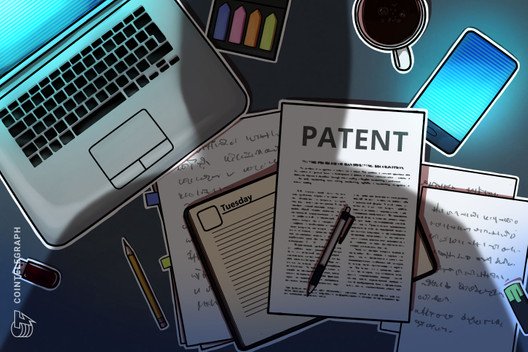The evolution of blockchain: Transactions, contracts and applications
What is Bitcoin? How does blockchain work? How to mine cryptocurrency? We are glad to help you answer these questions with our quick guides in Explained section.
rn”,”seo_description”:”What is Bitcoin? How does blockchain work? How to mine cryptocurrency? We are glad to help you answer these questions with our quick guides in Explained section.”},”words_count”:989,”description”:” Blockchain technology is more than just Bitcoin. Let’s examine the evolution of Nakamoto’s brainchildrn “,”author”:{“id”:1332,”title”:”Max Moeller”,”url”:”max-moeller”,”twitter”:””,”google_plus”:””,”photo”:””,”gender”:”male”,”description”:”Max is a cryptocurrency journalist with an affinity for games and emerging technology. After leaving school to start a writing career, he wrote his first article on blockchain and fell down the rabbit hole. Max has been published in various blockchain and crypto related magazines, doing his best to educate everyone on this nascent technology.”,”facebook”:””,”email”:”maxwell.m@cointelegraph.com”,”linkedin”:””,”created_at”:”2021-07-28 20:00:24″,”updated_at”:”2021-11-23 17:19:00″,”deleted_at”:null,”avatar”:”https://cointelegraph.com/assets/img/icons/author_male.jpg”,”hash”:”aHR0cHM6Ly9jb2ludGVsZWdyYXBoLmNvbS9hdXRob3JzL21heC1tb2VsbGVy”,”relativeUrl”:”https://cointelegraph.com/authors/max-moeller”,”user_id”:1332,”language_id”:1,”name”:”Max Moeller”,”desc”:”Max is a cryptocurrency journalist with an affinity for games and emerging technology. After leaving school to start a writing career, he wrote his first article on blockchain and fell down the rabbit hole. Max has been published in various blockchain and crypto related magazines, doing his best to educate everyone on this nascent technology.”,”seo_title”:””,”seo_description”:””,”enabled”:1,”show_in_authors”:0,”show_in_experts”:0},”category_id”:65,”audio”:”https://s3.cointelegraph.com/audio/83978.51003ef0-e251-4870-813c-afdd42d3a67a.mp3″,”tags”:[{“name”:”Blockchain”,”uri”:”/tags/blockchain”,”super”:1,”page_title”:”Blockchain News”},{“name”:”Smart Contracts”,”uri”:”/tags/smart-contracts”,”super”:0,”page_title”:”Smart Contracts News”},{“name”:”Transactions”,”uri”:”/tags/transactions”,”super”:0,”page_title”:”Transactions News”},{“name”:”Applications”,”uri”:”/tags/applications”,”super”:0,”page_title”:”Applications News”}],”tag_title”:”Blockchain”,”date”:”43 MINUTES AGO”,”badge”:{“title”:”Explained”,”label”:”default”},”qty”:31,”stats_pixel”:”“,”stats_pixel_url”:”https://zoa.cointelegraph.com/pixel?postId=83978®ionId=1″,”shares”:4,”infographic”:false,”sponsored”:false,”explained”:true,”press_release”:false,”show_referral”:false,”social_description”:” Blockchain technology has come a long way since its introduction in the form of Bitcoin. Let’s take a look at how its evolution and some of its new ideas can bring about the future of blockchain. “,”social_translators”:{“clipboard_popup_label”:”Link copied”,”socialWechatFooterError”:”WeChat error”,”socialWechatFooterText”:”WeChat share”,”socialWechatHeaderText”:”WeChat share”},”social_shares”:{“post_id”:83978,”post_url”:”https://cointelegraph.com/explained/the-evolution-of-blockchain-transactions-contracts-and-applications”,”post_titles”:{“normal”:”The evolution of blockchain: Transactions, contracts and applications”,”twitter”:”The evolution of blockchain: Transactions, contracts and applications”},”post_text”:{“normal”:”The evolution of blockchain: Transactions, contracts and applications”,”twitter”:”The evolution of blockchain: Transactions, contracts and applications https://cointelegraph.com/explained/the-evolution-of-blockchain-transactions-contracts-and-applications via @cointelegraph”},”accounts”:{“twitter”:”@cointelegraph”}},”socials”:{“facebook”:{“url”:”https://www.facebook.com/sharer/sharer.php?u=https%3A%2F%2Fcointelegraph.com%2Fexplained%2Fthe-evolution-of-blockchain-transactions-contracts-and-applications”,”count”:null,”short”:”fb”,”fa”:”facebook”},”twitter”:{“url”:”https://twitter.com/intent/tweet?text=The+evolution+of+blockchain%3A+Transactions%2C+contracts+and+applications https%3A%2F%2Fcointelegraph.com%2Fexplained%2Fthe-evolution-of-blockchain-transactions-contracts-and-applications via @cointelegraph”,”count”:null,”short”:”tw”,”fa”:”twitter”},”telegram”:{“url”:”https://telegram.me/share/url?url=https%3A%2F%2Fcointelegraph.com%2Fexplained%2Fthe-evolution-of-blockchain-transactions-contracts-and-applications &text=The+evolution+of+blockchain%3A+Transactions%2C+contracts+and+applications”,”count”:null,”short”:”tg”,”fa”:”paper-plane”},”whatsapp”:{“url”:”https://api.whatsapp.com/send?text=The+evolution+of+blockchain%3A+Transactions%2C+contracts+and+applications&href=https%3A%2F%2Fcointelegraph.com%2Fexplained%2Fthe-evolution-of-blockchain-transactions-contracts-and-applications”,”count”:null,”short”:”wu”,”fa”:”whatsapp”},”gplus”:{“url”:”https://plus.google.com/share?url=https%3A%2F%2Fcointelegraph.com%2Fexplained%2Fthe-evolution-of-blockchain-transactions-contracts-and-applications”,”count”:null,”short”:”gplus”,”fa”:”google-plus”},”reddit”:{“url”:”https://www.reddit.com/submit?url=https%3A%2F%2Fcointelegraph.com%2Fexplained%2Fthe-evolution-of-blockchain-transactions-contracts-and-applications&title=The+evolution+of+blockchain%3A+Transactions%2C+contracts+and+applications”,”count”:null,”short”:”reddit”,”fa”:”reddit-alien”},”linkedin”:{“url”:”https://www.linkedin.com/shareArticle?mini=true&url=https%3A%2F%2Fcointelegraph.com%2Fexplained%2Fthe-evolution-of-blockchain-transactions-contracts-and-applications&title=The+evolution+of+blockchain%3A+Transactions%2C+contracts+and+applications”,”count”:null,”short”:”li”,”fa”:”linkedin”}},”hide_disclaimer”:false,”elink”:”https://cointelegraph.com”,”etitle”:”Cointelegraph”,”elogo_x2″:”https://images.cointelegraph.com/images/528_aHR0cHM6Ly9zMy5jb2ludGVsZWdyYXBoLmNvbS9zdG9yYWdlL3VwbG9hZHMvdmlldy9hYjAzYTJhMmNlOWEyMWRjMWYwOTYxZDkxNzMxYzhiYS5wbmc=.png”,”elogo_x1″:”https://images.cointelegraph.com/images/260_aHR0cHM6Ly9zMy5jb2ludGVsZWdyYXBoLmNvbS9zdG9yYWdlL3VwbG9hZHMvdmlldy9hYjAzYTJhMmNlOWEyMWRjMWYwOTYxZDkxNzMxYzhiYS5wbmc=.png”,”elogo_svg”:false,”content”:[{“id”:3303,”post_id”:83978,”title”:”What is the blockchain?”,”content”:”
Blockchain technology is a cryptographic chain of peer-to-peer transactions. Blockchain transactions are stored in a trustless manner, thanks to decentralized nodes that validate and commit them.
nn
Bitcoin, the first-ever cryptocurrency, introduced blockchain technology and the concept of a blockchain ecosystem to the world. When examining the history of blockchain, we’ve got to look back to 2009. Revealed in 2009 by the anonymous Satoshi Nakamoto, the Bitcoin white paper detailed a solution to the double-spend problem surrounding digital peer-to-peer payments.
nnnnn”,”created_at”:”2022-04-03 13:31:43″,”updated_at”:”2022-04-03 14:04:43″,”sort”:1,”translations”:{“id”:3296,”explained_post_id”:3303,”title_en”:”What is the blockchain?”,”content_en”:”
Blockchain technology is a cryptographic chain of peer-to-peer transactions. Blockchain transactions are stored in a trustless manner, thanks to decentralized nodes that validate and commit them.
nn
Bitcoin, the first-ever cryptocurrency, introduced blockchain technology and the concept of a blockchain ecosystem to the world. When examining the history of blockchain, we’ve got to look back to 2009. Revealed in 2009 by the anonymous Satoshi Nakamoto, the Bitcoin white paper detailed a solution to the double-spend problem surrounding digital peer-to-peer payments.
nnnnn”,”title_es”:”¿Qué es la blockchain?”,”content_es”:”
La tecnología blockchain es una cadena criptográfica de transacciones peer-to-peer. Las transacciones de blockchain se almacenan sin confianza, gracias a nodos descentralizados que las validan y confirman.
nn
Bitcoin, la primera criptomoneda, introdujo la tecnología blockchain y el concepto de un ecosistema blockchain en el mundo. Al examinar la historia de la cadena de bloques, debemos mirar hacia atrás hasta 2009. Revelado en 2009 por el anónimo Satoshi Nakamoto, el libro blanco de Bitcoin detalla una solución al problema del doble gasto en torno a los pagos digitales entre pares.
nn”,”title_cn”:””,”content_cn”:”nnn”,”title_de”:””,”content_de”:”nnn”,”title_fr”:””,”content_fr”:”nnn”,”title_it”:””,”content_it”:”nnn”,”title_ar”:””,”content_ar”:”nnn”,”title_br”:””,”content_br”:”nnn”,”title_jp”:””,”content_jp”:”nnn”,”created_at”:”2022-04-03 13:31:43″,”updated_at”:”2022-04-04 00:35:34″,”title_kr”:””,”content_kr”:”nnn”,”title_tr”:””,”content_tr”:”nnn”}},{“id”:3304,”post_id”:83978,”title”:”Transactions in blockchain”,”content”:”
Nakamoto evolved transactions into trustless entities, removing the need for an intermediary.
nn
Nakamoto’s white paper presented their problems with traditional finance, stating that e-commerce had come to rely almost entirely on third-party intermediaries to process digital transactions. These intermediaries must spend time and money on mediating transactions, increasing costs for the transacting parties and limiting the potential for smaller, everyday transactions, among other problems.
nn
This solution entailed immutably timestamping transactions via computational proofs and hashing those transactions into an “ongoing chain of hash-based proof-of-work.”
nn
Such a chain would exist in a decentralized manner — as a timestamp server distributed among willingly participating nodes. If nodes were to leave and come back, they would take on a copy of the longest existing chain and continue from there.
nn
Decentralizing the transaction process allowed for trustless peer-to-peer interactivity, removing the need for third-party involvement and, ideally, providing cheaper and faster transactions to all. However, once the technology was in place, users needed a way to transact on top of it, which is where Bitcoin came into play.
nn
So when asking whether Bitcoin or blockchain came first, we now know the answer is blockchain.
nnnnn”,”created_at”:”2022-04-03 13:32:11″,”updated_at”:”2022-04-03 14:04:43″,”sort”:2,”translations”:{“id”:3297,”explained_post_id”:3304,”title_en”:”Transactions in blockchain”,”content_en”:”
Nakamoto evolved transactions into trustless entities, removing the need for an intermediary.
nn
Nakamoto’s white paper presented their problems with traditional finance, stating that e-commerce had come to rely almost entirely on third-party intermediaries to process digital transactions. These intermediaries must spend time and money on mediating transactions, increasing costs for the transacting parties and limiting the potential for smaller, everyday transactions, among other problems.
nn
This solution entailed immutably timestamping transactions via computational proofs and hashing those transactions into an “ongoing chain of hash-based proof-of-work.”
nn
Such a chain would exist in a decentralized manner — as a timestamp server distributed among willingly participating nodes. If nodes were to leave and come back, they would take on a copy of the longest existing chain and continue from there.
nn
Decentralizing the transaction process allowed for trustless peer-to-peer interactivity, removing the need for third-party involvement and, ideally, providing cheaper and faster transactions to all. However, once the technology was in place, users needed a way to transact on top of it, which is where Bitcoin came into play.
nn
So when asking whether Bitcoin or blockchain came first, we now know the answer is blockchain.
nnnnn”,”title_es”:”Transacciones en blockchain”,”content_es”:”
Nakamoto transformó las transacciones en entidades sin confianza, eliminando la necesidad de un intermediario.
nn
El libro blanco de Nakamoto presentó sus problemas con las finanzas tradicionales, afirmando que el comercio electrónico había llegado a depender casi por completo de intermediarios externos para procesar transacciones digitales. Estos intermediarios deben gastar tiempo y dinero en la mediación de transacciones, aumentando los costos para las partes que realizan la transacción y limitando el potencial de transacciones cotidianas más pequeñas, entre otros problemas.
nn
Esta solución implicaba transacciones de marca de tiempo inmutable a través de pruebas computacionales y hash de esas transacciones en una “cadena continua de proof-of-work basada en hash“.
nn
Tal cadena existiría de manera descentralizada, como un servidor de marca de tiempo distribuido entre los nodos que participan voluntariamente. Si los nodos salieran y regresaran, tomarían una copia de la cadena más larga existente y continuarían desde allí.
nn
La descentralización del proceso de transacción permitió una interactividad de peer-to-peer sin confianza, eliminando la necesidad de la participación de terceros e, idealmente, proporcionando transacciones más baratas y rápidas para todos. Sin embargo, una vez que la tecnología estuvo en su lugar, los usuarios necesitaban una forma de realizar transacciones además, que es donde entró en juego Bitcoin.
nn
Entonces, cuando preguntamos si Bitcoin o blockchain fueron lo primero, ahora sabemos que la respuesta es blockchain.
nn”,”title_cn”:””,”content_cn”:”nnn”,”title_de”:””,”content_de”:”nnn”,”title_fr”:””,”content_fr”:”nnn”,”title_it”:””,”content_it”:”nnn”,”title_ar”:””,”content_ar”:”nnn”,”title_br”:””,”content_br”:”nnn”,”title_jp”:””,”content_jp”:”nnn”,”created_at”:”2022-04-03 13:32:11″,”updated_at”:”2022-04-04 00:38:01″,”title_kr”:””,”content_kr”:”nnn”,”title_tr”:””,”content_tr”:”nnn”}},{“id”:3305,”post_id”:83978,”title”:”Contracts in blockchain”,”content”:”
Blockchain technology has evolved past simple peer-to-peer transactions. Innovations have led to decentralized applications (DApps) being built on top of the blockchain, and solutions for speeds and security have increased. Much of this innovation is due to smart contracts.
nn
Since the introduction of Bitcoin’s first-generation blockchain, or blockchain 1.0, the blockchain ecosystem has come into play. Ethereum (ETH), for example, is what many enthusiasts consider to be the future of blockchain.
nn
This moniker comes from the fact that Ethereum focuses more on blockchain applications and harnessing blockchain smart contracts than simply existing as a decentralized currency.
nn
Ethereum’s founder, Vitalik Buterin, envisioned his platform as a replacement for the online experience, which will decentralize all digital processes. Why stop at revolutionizing peer-to-peer payments when one can revolutionize financial lending and borrowing, gaming and social media, right?
nn
Buterin harnessed smart contracts to help realize his vision. Smart contracts are digital agreements made between two or more parties, not unlike contracts in real life. However, a real-life contract requires a lawyer or similar intermediary to function, complicating the process.
nn
A smart contract is enforced by an immutable set of rules agreed upon before its inception. These rules are hard-coded into Ethereum’s blockchain, ensuring no one can alter them once the contract begins and removing the need for an intermediary. The contract will execute when both parties fulfill their side of the agreement.
nnnnn”,”created_at”:”2022-04-03 13:32:40″,”updated_at”:”2022-04-03 14:04:43″,”sort”:3,”translations”:{“id”:3298,”explained_post_id”:3305,”title_en”:”Contracts in blockchain”,”content_en”:”
Blockchain technology has evolved past simple peer-to-peer transactions. Innovations have led to decentralized applications (DApps) being built on top of the blockchain, and solutions for speeds and security have increased. Much of this innovation is due to smart contracts.
nn
Since the introduction of Bitcoin’s first-generation blockchain, or blockchain 1.0, the blockchain ecosystem has come into play. Ethereum (ETH), for example, is what many enthusiasts consider to be the future of blockchain.
nn
This moniker comes from the fact that Ethereum focuses more on blockchain applications and harnessing blockchain smart contracts than simply existing as a decentralized currency.
nn
Ethereum’s founder, Vitalik Buterin, envisioned his platform as a replacement for the online experience, which will decentralize all digital processes. Why stop at revolutionizing peer-to-peer payments when one can revolutionize financial lending and borrowing, gaming and social media, right?
nn
Buterin harnessed smart contracts to help realize his vision. Smart contracts are digital agreements made between two or more parties, not unlike contracts in real life. However, a real-life contract requires a lawyer or similar intermediary to function, complicating the process.
nn
A smart contract is enforced by an immutable set of rules agreed upon before its inception. These rules are hard-coded into Ethereum’s blockchain, ensuring no one can alter them once the contract begins and removing the need for an intermediary. The contract will execute when both parties fulfill their side of the agreement.
nnnnn”,”title_es”:”Contratos en blockchain”,”content_es”:”
La tecnología blockchain ha evolucionado más allá de las simples transacciones entre pares. Las innovaciones han llevado a que se construyan aplicaciones descentralizadas (DApps) sobre la cadena de bloques, y han aumentado las soluciones para velocidades y seguridad. Gran parte de esta innovación se debe a los contratos inteligentes.
nn
Desde la introducción de la cadena de bloques de primera generación de Bitcoin, o cadena de bloques 1.0, el ecosistema de cadenas de bloques ha entrado en juego. Ethereum (ETH), por ejemplo, es lo que muchos entusiastas consideran el futuro de blockchain.
nn
Este apodo proviene del hecho de que Ethereum se centra más en las aplicaciones de blockchain y en el aprovechamiento de los contratos inteligentes de blockchain que simplemente en existir como una moneda descentralizada.
nn
El fundador de Ethereum, Vitalik Buterin, imaginó su plataforma como un reemplazo de la experiencia en línea, que descentralizará todos los procesos digitales. ¿Por qué detenerse en revolucionar los pagos entre pares cuando uno puede revolucionar los préstamos y créditos financieros, los juegos y las redes sociales, verdad?
nn
Buterin aprovechó los contratos inteligentes para ayudar a hacer realidad su visión. Los contratos inteligentes son acuerdos digitales hechos entre dos o más partes, no muy diferentes a los contratos en la vida real. Sin embargo, un contrato de la vida real requiere un abogado o un intermediario similar para funcionar, lo que complica el proceso.
nn
Un contrato inteligente se aplica mediante un conjunto inmutable de reglas acordadas antes de su inicio. Estas reglas están codificadas en la cadena de bloques de Ethereum, lo que garantiza que nadie pueda modificarlas una vez que comienza el contrato y elimina la necesidad de un intermediario. El contrato se ejecutará cuando ambas partes cumplan con su parte del acuerdo.
nn”,”title_cn”:””,”content_cn”:”nnn”,”title_de”:””,”content_de”:”nnn”,”title_fr”:””,”content_fr”:”nnn”,”title_it”:””,”content_it”:”nnn”,”title_ar”:””,”content_ar”:”nnn”,”title_br”:””,”content_br”:”nnn”,”title_jp”:””,”content_jp”:”nnn”,”created_at”:”2022-04-03 13:32:40″,”updated_at”:”2022-04-04 00:41:13″,”title_kr”:””,”content_kr”:”nnn”,”title_tr”:””,”content_tr”:”nnn”}},{“id”:3306,”post_id”:83978,”title”:”Applications”,”content”:”
Decentralized applications are entirely trustless, ensuring users can harness their abilities without involving an intermediary.
nn
While a barebones version of smart contract technology exists in Bitcoin, Ethereum took it to the next level by offering developers a platform on which to build DApps while utilizing the power of smart contracts.
nn
Now, one can consider Ethereum a second-generation blockchain or blockchain 2.0, thanks to its capabilities, which extend beyond Bitcoin, a first-generation blockchain. After all, Ethereum allows users to create their cryptocurrencies on top of its platform, harnessing the Ethereum blockchain for security and speed purposes.
nn
For example, developers might build an application for lending and borrowing managed entirely through smart contracts. In this case, smart contracts would act as escrow and hold the funds securely before facilitating the lending of the loan and serving as a space for borrowers to pay back the loan.
nn
However, despite the innovations provided by smart contracts and decentralized applications, Ethereum suffers from severe scalability issues, meaning it struggles to validate transactions when its network becomes too busy. This struggle is due to the consensus method harnessed by both Bitcoin and Ethereum: proof-of-work (PoW).
nn
PoW asks miners to validate blocks by harnessing their computer power to solve complex equations. However, there can only be so many miners validating so many transactions. If too many people are trying to transact, miners will be overwhelmed, and the validation process will take much longer. To solve such issues, Ethereum is moving to a proof-of-stake (PoS) consensus method in its network upgrade called Ethereum 2.0.
nn
Now, let’s enter the third-generation blockchain, or blockchain 3.0.
nnnnn”,”created_at”:”2022-04-03 13:33:09″,”updated_at”:”2022-04-03 14:04:42″,”sort”:4,”translations”:{“id”:3299,”explained_post_id”:3306,”title_en”:”Applications”,”content_en”:”
Decentralized applications are entirely trustless, ensuring users can harness their abilities without involving an intermediary.
nn
While a barebones version of smart contract technology exists in Bitcoin, Ethereum took it to the next level by offering developers a platform on which to build DApps while utilizing the power of smart contracts.
nn
Now, one can consider Ethereum a second-generation blockchain or blockchain 2.0, thanks to its capabilities, which extend beyond Bitcoin, a first-generation blockchain. After all, Ethereum allows users to create their cryptocurrencies on top of its platform, harnessing the Ethereum blockchain for security and speed purposes.
nn
For example, developers might build an application for lending and borrowing managed entirely through smart contracts. In this case, smart contracts would act as escrow and hold the funds securely before facilitating the lending of the loan and serving as a space for borrowers to pay back the loan.
nn
However, despite the innovations provided by smart contracts and decentralized applications, Ethereum suffers from severe scalability issues, meaning it struggles to validate transactions when its network becomes too busy. This struggle is due to the consensus method harnessed by both Bitcoin and Ethereum: proof-of-work (PoW).
nn
PoW asks miners to validate blocks by harnessing their computer power to solve complex equations. However, there can only be so many miners validating so many transactions. If too many people are trying to transact, miners will be overwhelmed, and the validation process will take much longer. To solve such issues, Ethereum is moving to a proof-of-stake (PoS) consensus method in its network upgrade called Ethereum 2.0.
nn
Now, let’s enter the third-generation blockchain, or blockchain 3.0.
nnnnn”,”title_es”:””,”content_es”:”nnn”,”title_cn”:””,”content_cn”:”nnn”,”title_de”:””,”content_de”:”nnn”,”title_fr”:””,”content_fr”:”nnn”,”title_it”:””,”content_it”:”nnn”,”title_ar”:””,”content_ar”:”nnn”,”title_br”:””,”content_br”:”nnn”,”title_jp”:””,”content_jp”:”nnn”,”created_at”:”2022-04-03 13:33:09″,”updated_at”:”2022-04-03 14:04:42″,”title_kr”:””,”content_kr”:”nnn”,”title_tr”:””,”content_tr”:”nnn”}},{“id”:3307,”post_id”:83978,”title”:”Blockchain 1.0 vs. blockchain 2.0 vs. blockchain 3.0″,”content”:”
Blockchain 3.0 evolves the concepts introduced by blockchain 1.0 and blockchain 2.0 even more, introducing interoperability solutions and new consensus methods.
nn
A third-generation blockchain ecosystem solves many of the issues that plagued blockchain 1.0 and blockchain 2.0 networks, such as scalability and interoperability. Blockchain 3.0 networks typically solve the scalability issue with a new consensus algorithm: proof-of-stake (PoS).
nn
Instead of mining, PoS asks users to stake or lock-in their tokens to become validators. Validators ensure that incoming transactions are valid before committing them to the blockchain network, earning transaction fees for their efforts.
nn
The idea is that users who have a stake in a network would want what’s best for it and would put their best foot forward when it comes to transaction validation. Also, transaction validation is faster than mining, ensuring a network can scale as more validators join.
nn
Then there are blockchain 3.0 interoperability solutions. Despite the vast number of blockchain ecosystems out there, many of them are siloed away from one another. Converting funds from one blockchain ecosystem to another via a cryptocurrency exchange is time-consuming and expensive, locking users out of true financial freedom.
nn
One common blockchain 3.0 interoperability solution is that of bridges. Bridges connect two or more blockchain networks, enabling users to convert assets from one network to another. In doing so, bridges unify all types of blockchain ecosystems, genuinely capitalizing on offering financial freedom.
nnnnn”,”created_at”:”2022-04-03 13:33:42″,”updated_at”:”2022-04-03 14:04:42″,”sort”:5,”translations”:{“id”:3300,”explained_post_id”:3307,”title_en”:”Blockchain 1.0 vs. blockchain 2.0 vs. blockchain 3.0″,”content_en”:”
Blockchain 3.0 evolves the concepts introduced by blockchain 1.0 and blockchain 2.0 even more, introducing interoperability solutions and new consensus methods.
nn
A third-generation blockchain ecosystem solves many of the issues that plagued blockchain 1.0 and blockchain 2.0 networks, such as scalability and interoperability. Blockchain 3.0 networks typically solve the scalability issue with a new consensus algorithm: proof-of-stake (PoS).
nn
Instead of mining, PoS asks users to stake or lock-in their tokens to become validators. Validators ensure that incoming transactions are valid before committing them to the blockchain network, earning transaction fees for their efforts.
nn
The idea is that users who have a stake in a network would want what’s best for it and would put their best foot forward when it comes to transaction validation. Also, transaction validation is faster than mining, ensuring a network can scale as more validators join.
nn
Then there are blockchain 3.0 interoperability solutions. Despite the vast number of blockchain ecosystems out there, many of them are siloed away from one another. Converting funds from one blockchain ecosystem to another via a cryptocurrency exchange is time-consuming and expensive, locking users out of true financial freedom.
nn
One common blockchain 3.0 interoperability solution is that of bridges. Bridges connect two or more blockchain networks, enabling users to convert assets from one network to another. In doing so, bridges unify all types of blockchain ecosystems, genuinely capitalizing on offering financial freedom.
nnnnn”,”title_es”:””,”content_es”:”nnn”,”title_cn”:””,”content_cn”:”nnn”,”title_de”:””,”content_de”:”nnn”,”title_fr”:””,”content_fr”:”nnn”,”title_it”:””,”content_it”:”nnn”,”title_ar”:””,”content_ar”:”nnn”,”title_br”:””,”content_br”:”nnn”,”title_jp”:””,”content_jp”:”nnn”,”created_at”:”2022-04-03 13:33:42″,”updated_at”:”2022-04-03 14:04:42″,”title_kr”:””,”content_kr”:”nnn”,”title_tr”:””,”content_tr”:”nnn”}},{“id”:3308,”post_id”:83978,”title”:”The various types of blockchain permissions”,”content”:”
Blockchain networks run on permission-based consensus methods, enabling various levels of use depending on a user’s needs and permission level.
nn
Aside from the blockchain generations, there are also different types of blockchain when viewed from a permission-based angle. Some of those permission types are public, permissioned or private blockchains. Each of these types offers a different use case for a company or user’s needs. When asked to list the three types of blockchain, you’ll now know the answer.
nn
Public blockchain
nn
A public blockchain is the most basic form of a blockchain ecosystem. A public blockchain is available to anyone who wishes to utilize the database. Bitcoin and Ethereum are considered public blockchains, for instance.
nn
On top of being open to all, these networks exist without a central authority. Instead, upgrades and other changes are implemented by developers from all over the world, and anyone can utilize a public blockchain’s infrastructure to build DApps.
nn
Permissioned blockchain
nn
A permissioned blockchain, also known as a consortium blockchain, restricts some or all parts of the database to nodes with special permission. For example, suppose a centralized team is working to develop a public blockchain network for the rest of the world. In that case, that team might have exclusive permissions to view network-centric information.
nn
Private blockchain
nn
While blockchain technology is essentially a decentralized distributed ledger, sometimes that ledger isn’t required to be public. A corporation’s employee database, for instance, doesn’t need to be shared but can still benefit from the efficiencies offered by blockchain technology.
nn
In this case, a corporation would employ a private blockchain. This organization can then use its private blockchain just like a traditional database. It might have some information available to the entire workforce, while more private information is only open to C-suite executives.
nn
Hybrid Blockchains
nn
Hybrid blockchains can be considered a future of blockchain development as they employ characteristics from both public and private networks. Corporations might utilize hybrid blockchains with public-facing services.
nn
Take a blockchain-powered video game, for example. If a team is working to develop a massively multiplayer online video game but doesn’t want to make development public, they might harness a hybrid blockchain.
nn
This way, players can still interact with the public side of things by signing up, playing and possibly even enacting governance when proposing and voting on game mechanics. The private side of the hybrid blockchain enables the game’s developers to keep its code and inner workings from the public.
nn
When choosing between a permissioned or private blockchain, it’s worth noting that enterprises can consider hybrid blockchains due to their multifaceted nature.
nnnnn”,”created_at”:”2022-04-03 13:34:41″,”updated_at”:”2022-04-03 14:04:42″,”sort”:6,”translations”:{“id”:3301,”explained_post_id”:3308,”title_en”:”The various types of blockchain permissions”,”content_en”:”
Blockchain networks run on permission-based consensus methods, enabling various levels of use depending on a user’s needs and permission level.
nn
Aside from the blockchain generations, there are also different types of blockchain when viewed from a permission-based angle. Some of those permission types are public, permissioned or private blockchains. Each of these types offers a different use case for a company or user’s needs. When asked to list the three types of blockchain, you’ll now know the answer.
nn
Public blockchain
nn
A public blockchain is the most basic form of a blockchain ecosystem. A public blockchain is available to anyone who wishes to utilize the database. Bitcoin and Ethereum are considered public blockchains, for instance.
nn
On top of being open to all, these networks exist without a central authority. Instead, upgrades and other changes are implemented by developers from all over the world, and anyone can utilize a public blockchain’s infrastructure to build DApps.
nn
Permissioned blockchain
nn
A permissioned blockchain, also known as a consortium blockchain, restricts some or all parts of the database to nodes with special permission. For example, suppose a centralized team is working to develop a public blockchain network for the rest of the world. In that case, that team might have exclusive permissions to view network-centric information.
nn
Private blockchain
nn
While blockchain technology is essentially a decentralized distributed ledger, sometimes that ledger isn’t required to be public. A corporation’s employee database, for instance, doesn’t need to be shared but can still benefit from the efficiencies offered by blockchain technology.
nn
In this case, a corporation would employ a private blockchain. This organization can then use its private blockchain just like a traditional database. It might have some information available to the entire workforce, while more private information is only open to C-suite executives.
nn
Hybrid Blockchains
nn
Hybrid blockchains can be considered a future of blockchain development as they employ characteristics from both public and private networks. Corporations might utilize hybrid blockchains with public-facing services.
nn
Take a blockchain-powered video game, for example. If a team is working to develop a massively multiplayer online video game but doesn’t want to make development public, they might harness a hybrid blockchain.
nn
This way, players can still interact with the public side of things by signing up, playing and possibly even enacting governance when proposing and voting on game mechanics. The private side of the hybrid blockchain enables the game’s developers to keep its code and inner workings from the public.
nn
When choosing between a permissioned or private blockchain, it’s worth noting that enterprises can consider hybrid blockchains due to their multifaceted nature.
nnnnn”,”title_es”:””,”content_es”:”nnn”,”title_cn”:””,”content_cn”:”nnn”,”title_de”:””,”content_de”:”nnn”,”title_fr”:””,”content_fr”:”nnn”,”title_it”:””,”content_it”:”nnn”,”title_ar”:””,”content_ar”:”nnn”,”title_br”:””,”content_br”:”nnn”,”title_jp”:””,”content_jp”:”nnn”,”created_at”:”2022-04-03 13:34:41″,”updated_at”:”2022-04-03 14:04:42″,”title_kr”:””,”content_kr”:”nnn”,”title_tr”:””,”content_tr”:”nnn”}}],”is_partner_material”:false,”commentsSection”:{“schemaEntityUrl”:”//cointelegraph.com/explained/the-evolution-of-blockchain-transactions-contracts-and-applications”,”list”:[],”amount”:0,”i18n”:{“addComment”:”Add a comment…”,”amountOnePostfix”:”Comment”,”amountPostfix”:”Comments”,”cancel”:”Cancel”,”delete”:”Delete”,”edit”:”Edit”,”errorBig”:”Comment text cannot be longer than 2000 characters”,”errorDuplicate”:”Duplicate comment”,”errorSmall”:”Comment text must be at least 2 characters long”,”hideButton”:”Hide comments”,”noComments”:” “,”commentOnModeration”:”Comment on moderation”,”postComment”:”Post”,”reply”:”Reply”,”showAllComments”:”Show All Comments”,”showButtonPostfix”:”comments”,”showButtonPrefix”:”Show”,”signIn”:”Sign in”,”update”:”Update comment”,”commentWasDeleted”:”This comment has been deleted”}},”related”:[{“id”:46058,”retina”:”https://images.cointelegraph.com/images/1480_aHR0cHM6Ly9zMy5jb2ludGVsZWdyYXBoLmNvbS9zdG9yYWdlL3VwbG9hZHMvdmlldy81MzgzMjU4NzkzMTAxZDA1YWRjNGExOWYyNzk1MWM0ZC5qcGc=.jpg”,”img”:”https://images.cointelegraph.com/images/740_aHR0cHM6Ly9zMy5jb2ludGVsZWdyYXBoLmNvbS9zdG9yYWdlL3VwbG9hZHMvdmlldy81MzgzMjU4NzkzMTAxZDA1YWRjNGExOWYyNzk1MWM0ZC5qcGc=.jpg”,”thumb”:”https://images.cointelegraph.com/images/370_aHR0cHM6Ly9zMy5jb2ludGVsZWdyYXBoLmNvbS9zdG9yYWdlL3VwbG9hZHMvdmlldy81MzgzMjU4NzkzMTAxZDA1YWRjNGExOWYyNzk1MWM0ZC5qcGc=.jpg”,”thumb370″:”https://images.cointelegraph.com/images/370_aHR0cHM6Ly9zMy5jb2ludGVsZWdyYXBoLmNvbS9zdG9yYWdlL3VwbG9hZHMvdmlldy81MzgzMjU4NzkzMTAxZDA1YWRjNGExOWYyNzk1MWM0ZC5qcGc=.jpg”,”amp_thumb”:”https://images.cointelegraph.com/images/150_aHR0cHM6Ly9zMy5jb2ludGVsZWdyYXBoLmNvbS9zdG9yYWdlL3VwbG9hZHMvdmlldy81MzgzMjU4NzkzMTAxZDA1YWRjNGExOWYyNzk1MWM0ZC5qcGc=.jpg”,”thumb150″:”https://images.cointelegraph.com/images/150_aHR0cHM6Ly9zMy5jb2ludGVsZWdyYXBoLmNvbS9zdG9yYWdlL3VwbG9hZHMvdmlldy81MzgzMjU4NzkzMTAxZDA1YWRjNGExOWYyNzk1MWM0ZC5qcGc=.jpg”,”url”:”https://cointelegraph.com/news/the-big-four-are-gearing-up-to-become-crypto-and-blockchain-auditors”,”title”:”The Big Four Are Gearing Up to Become Crypto and Blockchain Auditors”,”lead”:”Professional service giants like the Big Four are innovating in the blockchain and crypto space. Is it enough to make an impact?”,”leadfull”:””,”category_id”:19,”category_url”:”https://cointelegraph.com/category/analysis”,”category_title”:”Analysis”,”author_url”:”https://cointelegraph.com/authors/rachel-wolfson”,”author_hash”:”aHR0cHM6Ly9jb2ludGVsZWdyYXBoLmNvbS9hdXRob3JzL3JhY2hlbC13b2xmc29u”,”author_title”:”Rachel Wolfson”,”author_img”:”https://images.cointelegraph.com/images/32_aHR0cHM6Ly9zMy5jb2ludGVsZWdyYXBoLmNvbS9zdG9yYWdlL3VwbG9hZHMvdmlldy81OGI2YmIyMjI0MGRjOGI5M2UxYTUxYzMzZTMzNjY2Mi5qcGc=.jpg”,”date”:”MAY 29, 2020″,”flash_date”:”MAY 29, 2020″,”sponsored”:false,”press_release”:false,”sponsored_label”:”Sponsored”,”explained”:false,”badge”:{“title”:”Analysis”,”label”:”info”},”published”:{“date”:”2020-05-29 17:00:00.000000″,”timezone_type”:3,”timezone”:”Europe/London”},”stat_uniqs”:233926,”rss_date”:”Fri, 29 May 2020 17:00:00 +0100″,”publishedW3″:”2020-05-29T17:00:00+01:00″,”show_referral”:true,”isMagazine”:false},{“id”:77411,”retina”:”https://images.cointelegraph.com/images/1480_aHR0cHM6Ly9zMy5jb2ludGVsZWdyYXBoLmNvbS9zdG9yYWdlL3VwbG9hZHMvdmlldy9jZmJlODQ2ODgzZmNjMzA4MmJjOTUxODE3ZTdlNmU0Mi5qcGc=.jpg”,”img”:”https://images.cointelegraph.com/images/740_aHR0cHM6Ly9zMy5jb2ludGVsZWdyYXBoLmNvbS9zdG9yYWdlL3VwbG9hZHMvdmlldy9jZmJlODQ2ODgzZmNjMzA4MmJjOTUxODE3ZTdlNmU0Mi5qcGc=.jpg”,”thumb”:”https://images.cointelegraph.com/images/370_aHR0cHM6Ly9zMy5jb2ludGVsZWdyYXBoLmNvbS9zdG9yYWdlL3VwbG9hZHMvdmlldy9jZmJlODQ2ODgzZmNjMzA4MmJjOTUxODE3ZTdlNmU0Mi5qcGc=.jpg”,”thumb370″:”https://images.cointelegraph.com/images/370_aHR0cHM6Ly9zMy5jb2ludGVsZWdyYXBoLmNvbS9zdG9yYWdlL3VwbG9hZHMvdmlldy9jZmJlODQ2ODgzZmNjMzA4MmJjOTUxODE3ZTdlNmU0Mi5qcGc=.jpg”,”amp_thumb”:”https://images.cointelegraph.com/images/150_aHR0cHM6Ly9zMy5jb2ludGVsZWdyYXBoLmNvbS9zdG9yYWdlL3VwbG9hZHMvdmlldy9jZmJlODQ2ODgzZmNjMzA4MmJjOTUxODE3ZTdlNmU0Mi5qcGc=.jpg”,”thumb150″:”https://images.cointelegraph.com/images/150_aHR0cHM6Ly9zMy5jb2ludGVsZWdyYXBoLmNvbS9zdG9yYWdlL3VwbG9hZHMvdmlldy9jZmJlODQ2ODgzZmNjMzA4MmJjOTUxODE3ZTdlNmU0Mi5qcGc=.jpg”,”url”:”https://cointelegraph.com/news/investment-platform-helps-users-grow-their-earnings-without-the-complexities-of-navigating-crypto-finance”,”title”:”Investment platform helps users grow their earnings without the complexities of navigating crypto finance”,”lead”:”The lack of simple experience is holding the world back from embracing high-interest earnings on digital currencies.”,”leadfull”:””,”category_id”:62,”category_url”:”https://cointelegraph.com/category/sponsored”,”category_title”:”Sponsored”,”author_url”:”https://cointelegraph.com/authors/sarah-jansen”,”author_hash”:”aHR0cHM6Ly9jb2ludGVsZWdyYXBoLmNvbS9hdXRob3JzL3NhcmFoLWphbnNlbg==”,”author_title”:”Sarah Jansen”,”author_img”:”https://images.cointelegraph.com/images/32_aHR0cHM6Ly9zMy5jb2ludGVsZWdyYXBoLmNvbS9zdG9yYWdlL3VwbG9hZHMvdmlldy84N2IwYjRjMzkyZjlhYmM4ZjlhZDNiZTU3Y2FjZGJmZC5qcGc=.jpg”,”date”:”DEC 07, 2021″,”flash_date”:”DEC 07, 2021″,”sponsored”:true,”press_release”:false,”sponsored_label”:”Sponsored”,”explained”:false,”badge”:{“title”:”Sponsored”,”label”:”default”},”published”:{“date”:”2021-12-07 12:00:00.000000″,”timezone_type”:3,”timezone”:”Europe/London”},”stat_uniqs”:3106,”rss_date”:”Tue, 07 Dec 2021 12:00:00 +0000″,”publishedW3″:”2021-12-07T12:00:00+00:00″,”show_referral”:true,”isMagazine”:false},{“id”:83062,”retina”:”https://images.cointelegraph.com/images/1480_aHR0cHM6Ly9zMy5jb2ludGVsZWdyYXBoLmNvbS91cGxvYWRzLzIwMjItMDMvM2VkZDQ4MWQtMDVlMi00OGIyLTgzNGUtY2VlMjc0N2VhMzRjLmpwZw==.jpg”,”img”:”https://images.cointelegraph.com/images/740_aHR0cHM6Ly9zMy5jb2ludGVsZWdyYXBoLmNvbS91cGxvYWRzLzIwMjItMDMvM2VkZDQ4MWQtMDVlMi00OGIyLTgzNGUtY2VlMjc0N2VhMzRjLmpwZw==.jpg”,”thumb”:”https://images.cointelegraph.com/images/370_aHR0cHM6Ly9zMy5jb2ludGVsZWdyYXBoLmNvbS91cGxvYWRzLzIwMjItMDMvM2VkZDQ4MWQtMDVlMi00OGIyLTgzNGUtY2VlMjc0N2VhMzRjLmpwZw==.jpg”,”thumb370″:”https://images.cointelegraph.com/images/370_aHR0cHM6Ly9zMy5jb2ludGVsZWdyYXBoLmNvbS91cGxvYWRzLzIwMjItMDMvM2VkZDQ4MWQtMDVlMi00OGIyLTgzNGUtY2VlMjc0N2VhMzRjLmpwZw==.jpg”,”amp_thumb”:”https://images.cointelegraph.com/images/150_aHR0cHM6Ly9zMy5jb2ludGVsZWdyYXBoLmNvbS91cGxvYWRzLzIwMjItMDMvM2VkZDQ4MWQtMDVlMi00OGIyLTgzNGUtY2VlMjc0N2VhMzRjLmpwZw==.jpg”,”thumb150″:”https://images.cointelegraph.com/images/150_aHR0cHM6Ly9zMy5jb2ludGVsZWdyYXBoLmNvbS91cGxvYWRzLzIwMjItMDMvM2VkZDQ4MWQtMDVlMi00OGIyLTgzNGUtY2VlMjc0N2VhMzRjLmpwZw==.jpg”,”url”:”https://cointelegraph.com/news/inside-the-blockchain-developers-mind-how-to-avoid-development-hell”,”title”:”Inside the blockchain developers’ mind: How to avoid development hell”,”lead”:”Developing the blockchain framework has always been incredibly challenging. Let’s dive into the ways how to end these difficulties.”,”leadfull”:””,”category_id”:98,”category_url”:”https://cointelegraph.com/category/expert-take”,”category_title”:”Expert Take”,”author_url”:”https://cointelegraph.com/authors/andrew-levine”,”author_hash”:”aHR0cHM6Ly9jb2ludGVsZWdyYXBoLmNvbS9hdXRob3JzL2FuZHJldy1sZXZpbmU=”,”author_title”:”Andrew Levine”,”author_img”:”https://images.cointelegraph.com/images/32_aHR0cHM6Ly9zMy5jb2ludGVsZWdyYXBoLmNvbS9zdG9yYWdlL3VwbG9hZHMvdmlldy9kNjIyMGEyYjI2ZmE3N2IzODc4NDlmNjZkYjU0YTVjMC5qcGc=.jpg”,”date”:”MAR 20, 2022″,”flash_date”:”MAR 20, 2022″,”sponsored”:false,”press_release”:false,”sponsored_label”:”Sponsored”,”explained”:false,”badge”:{“title”:”Expert Take”,”label”:”info”},”published”:{“date”:”2022-03-20 17:14:00.000000″,”timezone_type”:3,”timezone”:”Europe/London”},”stat_uniqs”:2626,”rss_date”:”Sun, 20 Mar 2022 17:14:00 +0000″,”publishedW3″:”2022-03-20T17:14:00+00:00″,”show_referral”:true,”isMagazine”:false},{“id”:83201,”retina”:”https://images.cointelegraph.com/images/1480_aHR0cHM6Ly9zMy5jb2ludGVsZWdyYXBoLmNvbS9zdG9yYWdlL3VwbG9hZHMvdmlldy9lOTYyNWIwNmQ1OGUxMTc4OTRiYWUwZjJiNjFiYjM5NS5qcGc=.jpg”,”img”:”https://images.cointelegraph.com/images/740_aHR0cHM6Ly9zMy5jb2ludGVsZWdyYXBoLmNvbS9zdG9yYWdlL3VwbG9hZHMvdmlldy9lOTYyNWIwNmQ1OGUxMTc4OTRiYWUwZjJiNjFiYjM5NS5qcGc=.jpg”,”thumb”:”https://images.cointelegraph.com/images/370_aHR0cHM6Ly9zMy5jb2ludGVsZWdyYXBoLmNvbS9zdG9yYWdlL3VwbG9hZHMvdmlldy9lOTYyNWIwNmQ1OGUxMTc4OTRiYWUwZjJiNjFiYjM5NS5qcGc=.jpg”,”thumb370″:”https://images.cointelegraph.com/images/370_aHR0cHM6Ly9zMy5jb2ludGVsZWdyYXBoLmNvbS9zdG9yYWdlL3VwbG9hZHMvdmlldy9lOTYyNWIwNmQ1OGUxMTc4OTRiYWUwZjJiNjFiYjM5NS5qcGc=.jpg”,”amp_thumb”:”https://images.cointelegraph.com/images/150_aHR0cHM6Ly9zMy5jb2ludGVsZWdyYXBoLmNvbS9zdG9yYWdlL3VwbG9hZHMvdmlldy9lOTYyNWIwNmQ1OGUxMTc4OTRiYWUwZjJiNjFiYjM5NS5qcGc=.jpg”,”thumb150″:”https://images.cointelegraph.com/images/150_aHR0cHM6Ly9zMy5jb2ludGVsZWdyYXBoLmNvbS9zdG9yYWdlL3VwbG9hZHMvdmlldy9lOTYyNWIwNmQ1OGUxMTc4OTRiYWUwZjJiNjFiYjM5NS5qcGc=.jpg”,”url”:”https://cointelegraph.com/news/blockchain-40-technology-introduces-solutions-for-scalability-transaction-speed-throughput”,”title”:”Blockchain 4.0 technology introduces solutions for scalability, transaction speed, throughput”,”lead”:”Solving for blockchain’s ability to process mass microtransactions proves to be a major barrier for metaverse adoption.”,”leadfull”:””,”category_id”:62,”category_url”:”https://cointelegraph.com/category/sponsored”,”category_title”:”Sponsored”,”author_url”:”https://cointelegraph.com/authors/sarah-jansen”,”author_hash”:”aHR0cHM6Ly9jb2ludGVsZWdyYXBoLmNvbS9hdXRob3JzL3NhcmFoLWphbnNlbg==”,”author_title”:”Sarah Jansen”,”author_img”:”https://images.cointelegraph.com/images/32_aHR0cHM6Ly9zMy5jb2ludGVsZWdyYXBoLmNvbS9zdG9yYWdlL3VwbG9hZHMvdmlldy84N2IwYjRjMzkyZjlhYmM4ZjlhZDNiZTU3Y2FjZGJmZC5qcGc=.jpg”,”date”:”MAR 21, 2022″,”flash_date”:”MAR 21, 2022″,”sponsored”:true,”press_release”:false,”sponsored_label”:”Sponsored”,”explained”:false,”badge”:{“title”:”Sponsored”,”label”:”default”},”published”:{“date”:”2022-03-21 19:00:00.000000″,”timezone_type”:3,”timezone”:”Europe/London”},”stat_uniqs”:1777,”rss_date”:”Mon, 21 Mar 2022 19:00:00 +0000″,”publishedW3″:”2022-03-21T19:00:00+00:00″,”show_referral”:true,”isMagazine”:false},{“id”:83398,”retina”:”https://images.cointelegraph.com/images/1480_aHR0cHM6Ly9zMy5jb2ludGVsZWdyYXBoLmNvbS91cGxvYWRzLzIwMjItMDMvYzE3MjBhODYtNDhjYS00ZTE2LThjNDgtOWI0ZWYzOTM3NDgzLmpwZw==.jpg”,”img”:”https://images.cointelegraph.com/images/740_aHR0cHM6Ly9zMy5jb2ludGVsZWdyYXBoLmNvbS91cGxvYWRzLzIwMjItMDMvYzE3MjBhODYtNDhjYS00ZTE2LThjNDgtOWI0ZWYzOTM3NDgzLmpwZw==.jpg”,”thumb”:”https://images.cointelegraph.com/images/370_aHR0cHM6Ly9zMy5jb2ludGVsZWdyYXBoLmNvbS91cGxvYWRzLzIwMjItMDMvYzE3MjBhODYtNDhjYS00ZTE2LThjNDgtOWI0ZWYzOTM3NDgzLmpwZw==.jpg”,”thumb370″:”https://images.cointelegraph.com/images/370_aHR0cHM6Ly9zMy5jb2ludGVsZWdyYXBoLmNvbS91cGxvYWRzLzIwMjItMDMvYzE3MjBhODYtNDhjYS00ZTE2LThjNDgtOWI0ZWYzOTM3NDgzLmpwZw==.jpg”,”amp_thumb”:”https://images.cointelegraph.com/images/150_aHR0cHM6Ly9zMy5jb2ludGVsZWdyYXBoLmNvbS91cGxvYWRzLzIwMjItMDMvYzE3MjBhODYtNDhjYS00ZTE2LThjNDgtOWI0ZWYzOTM3NDgzLmpwZw==.jpg”,”thumb150″:”https://images.cointelegraph.com/images/150_aHR0cHM6Ly9zMy5jb2ludGVsZWdyYXBoLmNvbS91cGxvYWRzLzIwMjItMDMvYzE3MjBhODYtNDhjYS00ZTE2LThjNDgtOWI0ZWYzOTM3NDgzLmpwZw==.jpg”,”url”:”https://cointelegraph.com/news/stargate-finance-attracts-1-9b-in-six-days”,”title”:”Stargate Finance attracts $1.9B in six days”,”lead”:”Cross-chain protocol Stargate Finance has generated over $1.9 billion TVL in just six days following an Alameda Research buying spree.”,”leadfull”:””,”category_id”:2,”category_url”:”https://cointelegraph.com/category/latest-news”,”category_title”:”Latest News”,”author_url”:”https://cointelegraph.com/authors/tom-mitchelhill”,”author_hash”:”aHR0cHM6Ly9jb2ludGVsZWdyYXBoLmNvbS9hdXRob3JzL3RvbS1taXRjaGVsaGlsbA==”,”author_title”:”Tom Mitchelhill “,”author_img”:”https://images.cointelegraph.com/images/32_aHR0cHM6Ly9zMy5jb2ludGVsZWdyYXBoLmNvbS9zdG9yYWdlL3VwbG9hZHMvdmlldy9mYzg2Mjg3Y2RlYTJhOWIxNjFiZDdlMDhhY2YyMTVmYy5qcGc=.jpg”,”date”:”MAR 24, 2022″,”flash_date”:”MAR 24, 2022″,”sponsored”:false,”press_release”:false,”sponsored_label”:”Sponsored”,”explained”:false,”badge”:{“title”:”News”,”label”:”default”},”published”:{“date”:”2022-03-24 06:51:26.000000″,”timezone_type”:3,”timezone”:”Europe/London”},”stat_uniqs”:11992,”rss_date”:”Thu, 24 Mar 2022 06:51:26 +0000″,”publishedW3″:”2022-03-24T06:51:26+00:00″,”show_referral”:true,”isMagazine”:false},{“id”:83430,”retina”:”https://images.cointelegraph.com/images/1480_aHR0cHM6Ly9zMy5jb2ludGVsZWdyYXBoLmNvbS91cGxvYWRzLzIwMjItMDMvZGNhZmRjMjEtYjRlOC00ODUzLTljYTctYzMyZGVjMDI5MGNlLmpwZw==.jpg”,”img”:”https://images.cointelegraph.com/images/740_aHR0cHM6Ly9zMy5jb2ludGVsZWdyYXBoLmNvbS91cGxvYWRzLzIwMjItMDMvZGNhZmRjMjEtYjRlOC00ODUzLTljYTctYzMyZGVjMDI5MGNlLmpwZw==.jpg”,”thumb”:”https://images.cointelegraph.com/images/370_aHR0cHM6Ly9zMy5jb2ludGVsZWdyYXBoLmNvbS91cGxvYWRzLzIwMjItMDMvZGNhZmRjMjEtYjRlOC00ODUzLTljYTctYzMyZGVjMDI5MGNlLmpwZw==.jpg”,”thumb370″:”https://images.cointelegraph.com/images/370_aHR0cHM6Ly9zMy5jb2ludGVsZWdyYXBoLmNvbS91cGxvYWRzLzIwMjItMDMvZGNhZmRjMjEtYjRlOC00ODUzLTljYTctYzMyZGVjMDI5MGNlLmpwZw==.jpg”,”amp_thumb”:”https://images.cointelegraph.com/images/150_aHR0cHM6Ly9zMy5jb2ludGVsZWdyYXBoLmNvbS91cGxvYWRzLzIwMjItMDMvZGNhZmRjMjEtYjRlOC00ODUzLTljYTctYzMyZGVjMDI5MGNlLmpwZw==.jpg”,”thumb150″:”https://images.cointelegraph.com/images/150_aHR0cHM6Ly9zMy5jb2ludGVsZWdyYXBoLmNvbS91cGxvYWRzLzIwMjItMDMvZGNhZmRjMjEtYjRlOC00ODUzLTljYTctYzMyZGVjMDI5MGNlLmpwZw==.jpg”,”url”:”https://cointelegraph.com/news/how-crypto-became-a-major-source-of-relief-for-embattled-ukraine”,”title”:”How crypto became a major source of relief for embattled Ukraine “,”lead”:”Illia Polosukhin, Ukraine-born crypto entrepreneur and Near protocol co-founder, explains how crypto has become an invaluable instrument for supporting Ukraine’…”,”leadfull”:””,”category_id”:86,”category_url”:”https://cointelegraph.com/category/interview”,”category_title”:”Interview”,”author_url”:”https://cointelegraph.com/authors/marco-castrovilli”,”author_hash”:”aHR0cHM6Ly9jb2ludGVsZWdyYXBoLmNvbS9hdXRob3JzL21hcmNvLWNhc3Ryb3ZpbGxp”,”author_title”:”Marco Castrovilli”,”author_img”:”https://cointelegraph.com/assets/img/icons/author_male.jpg”,”date”:”MAR 24, 2022″,”flash_date”:”MAR 24, 2022″,”sponsored”:false,”press_release”:false,”sponsored_label”:”Sponsored”,”explained”:false,”badge”:{“title”:”Video”,”label”:”success”},”published”:{“date”:”2022-03-24 16:00:00.000000″,”timezone_type”:3,”timezone”:”Europe/London”},”stat_uniqs”:2104,”rss_date”:”Thu, 24 Mar 2022 16:00:00 +0000″,”publishedW3″:”2022-03-24T16:00:00+00:00″,”show_referral”:true,”isMagazine”:false}]}” :shares=”{“facebook”:{“url”:”https://www.facebook.com/sharer/sharer.php?u=%URL%”,”icon”:”facebook”,”title”:”Facebook”,”sizesAllowed”:[{“size”:”lg”,”label”:”Large devices”,”breakpoint”:”> 1200px”},{“size”:”md”,”label”:”Medium devices”,”breakpoint”:”> 992px”},{“size”:”sm”,”label”:”Small tablets”,”breakpoint”:”> 768px”},{“size”:”xs”,”label”:”Smartphones”,”breakpoint”:”> 480px”},{“size”:”xxs”,”label”:”Extra small devices”,”breakpoint”:”< 480px"}],"position":1,"status":true},"twitter":{"url":"https://twitter.com/intent/tweet?text=%TEXT%","icon":"twitter","title":"Twitter","position":2,"status":true,"sizesAllowed":[{"size":"xxs","label":"Extra small devices","breakpoint":"< 480px"},{"size":"xs","label":"Smartphones","breakpoint":"> 480px”},{“size”:”sm”,”label”:”Small tablets”,”breakpoint”:”> 768px”},{“size”:”md”,”label”:”Medium devices”,”breakpoint”:”> 992px”},{“size”:”lg”,”label”:”Large devices”,”breakpoint”:”> 1200px”}]},”telegram”:{“url”:”https://t.me/share/url?url=%URL%&text=%TEXT%”,”icon”:”telegram”,”title”:”Telegram”,”position”:3,”status”:true,”sizesAllowed”:[{“size”:”xxs”,”label”:”Extra small devices”,”breakpoint”:”< 480px"},{"size":"xs","label":"Smartphones","breakpoint":"> 480px”},{“size”:”sm”,”label”:”Small tablets”,”breakpoint”:”> 768px”},{“size”:”md”,”label”:”Medium devices”,”breakpoint”:”> 992px”},{“size”:”lg”,”label”:”Large devices”,”breakpoint”:”> 1200px”}]},”linkedin”:{“url”:”https://www.linkedin.com/shareArticle?mini=true&url=%URL%&title=%TITLE%”,”icon”:”linked-in”,”title”:”LinkedIn”,”position”:5,”status”:true,”sizesAllowed”:[{“size”:”xxs”,”label”:”Extra small devices”,”breakpoint”:”< 480px"},{"size":"xs","label":"Smartphones","breakpoint":"> 480px”},{“size”:”sm”,”label”:”Small tablets”,”breakpoint”:”> 768px”},{“size”:”md”,”label”:”Medium devices”,”breakpoint”:”> 992px”},{“size”:”lg”,”label”:”Large devices”,”breakpoint”:”> 1200px”}]},”copy”:{“url”:”%URL%”,”icon”:”copy”,”position”:7,”title”:”Copy Link”,”sizesAllowed”:[{“size”:”xxs”,”label”:”Extra small devices”,”breakpoint”:”< 480px"},{"size":"xs","label":"Smartphones","breakpoint":"> 480px”},{“size”:”sm”,”label”:”Small tablets”,”breakpoint”:”> 768px”},{“size”:”md”,”label”:”Medium devices”,”breakpoint”:”> 992px”},{“size”:”lg”,”label”:”Large devices”,”breakpoint”:”> 1200px”}],”status”:true},”whatsapp”:{“url”:”https://wa.me/?text=%TITLE% %URL%”,”icon”:”whats-app”,”title”:”Whatsapp”,”sizesAllowed”:[{“size”:”xxs”,”label”:”Extra small devices”,”breakpoint”:”< 480px"},{"size":"xs","label":"Smartphones","breakpoint":"> 480px”},{“size”:”sm”,”label”:”Small tablets”,”breakpoint”:”> 768px”},{“size”:”md”,”label”:”Medium devices”,”breakpoint”:”> 992px”},{“size”:”lg”,”label”:”Large devices”,”breakpoint”:”> 1200px”}],”position”:6,”status”:true},”reddit”:{“url”:”https://www.reddit.com/submit?url=%URL%&title=%TITLE%”,”icon”:”reddit”,”title”:”Reddit”,”sizesAllowed”:[{“size”:”xxs”,”label”:”Extra small devices”,”breakpoint”:”< 480px"},{"size":"xs","label":"Smartphones","breakpoint":"> 480px”},{“size”:”sm”,”label”:”Small tablets”,”breakpoint”:”> 768px”},{“size”:”md”,”label”:”Medium devices”,”breakpoint”:”> 992px”},{“size”:”lg”,”label”:”Large devices”,”breakpoint”:”> 1200px”}],”position”:4,”status”:true}}” is=”ExplainedPostPage”>
Blockchain technology is a cryptographic chain of peer-to-peer transactions. Blockchain transactions are stored in a trustless manner, thanks to decentralized nodes that validate and commit them.
Bitcoin, the first-ever cryptocurrency, introduced blockchain technology and the concept of a blockchain ecosystem to the world. When examining the history of blockchain, we’ve got to look back to 2009. Revealed in 2009 by the anonymous Satoshi Nakamoto, the Bitcoin white paper detailed a solution to the double-spend problem surrounding digital peer-to-peer payments.
Nakamoto evolved transactions into trustless entities, removing the need for an intermediary.
Nakamoto’s white paper presented their problems with traditional finance, stating that e-commerce had come to rely almost entirely on third-party intermediaries to process digital transactions. These intermediaries must spend time and money on mediating transactions, increasing costs for the transacting parties and limiting the potential for smaller, everyday transactions, among other problems.
This solution entailed immutably timestamping transactions via computational proofs and hashing those transactions into an “ongoing chain of hash-based proof-of-work.”
Such a chain would exist in a decentralized manner — as a timestamp server distributed among willingly participating nodes. If nodes were to leave and come back, they would take on a copy of the longest existing chain and continue from there.
Decentralizing the transaction process allowed for trustless peer-to-peer interactivity, removing the need for third-party involvement and, ideally, providing cheaper and faster transactions to all. However, once the technology was in place, users needed a way to transact on top of it, which is where Bitcoin came into play.
So when asking whether Bitcoin or blockchain came first, we now know the answer is blockchain.
Blockchain technology has evolved past simple peer-to-peer transactions. Innovations have led to decentralized applications (DApps) being built on top of the blockchain, and solutions for speeds and security have increased. Much of this innovation is due to smart contracts.
Since the introduction of Bitcoin’s first-generation blockchain, or blockchain 1.0, the blockchain ecosystem has come into play. Ethereum (ETH), for example, is what many enthusiasts consider to be the future of blockchain.
This moniker comes from the fact that Ethereum focuses more on blockchain applications and harnessing blockchain smart contracts than simply existing as a decentralized currency.
Ethereum’s founder, Vitalik Buterin, envisioned his platform as a replacement for the online experience, which will decentralize all digital processes. Why stop at revolutionizing peer-to-peer payments when one can revolutionize financial lending and borrowing, gaming and social media, right?
Buterin harnessed smart contracts to help realize his vision. Smart contracts are digital agreements made between two or more parties, not unlike contracts in real life. However, a real-life contract requires a lawyer or similar intermediary to function, complicating the process.
A smart contract is enforced by an immutable set of rules agreed upon before its inception. These rules are hard-coded into Ethereum’s blockchain, ensuring no one can alter them once the contract begins and removing the need for an intermediary. The contract will execute when both parties fulfill their side of the agreement.
Decentralized applications are entirely trustless, ensuring users can harness their abilities without involving an intermediary.
While a barebones version of smart contract technology exists in Bitcoin, Ethereum took it to the next level by offering developers a platform on which to build DApps while utilizing the power of smart contracts.
Now, one can consider Ethereum a second-generation blockchain or blockchain 2.0, thanks to its capabilities, which extend beyond Bitcoin, a first-generation blockchain. After all, Ethereum allows users to create their cryptocurrencies on top of its platform, harnessing the Ethereum blockchain for security and speed purposes.
For example, developers might build an application for lending and borrowing managed entirely through smart contracts. In this case, smart contracts would act as escrow and hold the funds securely before facilitating the lending of the loan and serving as a space for borrowers to pay back the loan.
However, despite the innovations provided by smart contracts and decentralized applications, Ethereum suffers from severe scalability issues, meaning it struggles to validate transactions when its network becomes too busy. This struggle is due to the consensus method harnessed by both Bitcoin and Ethereum: proof-of-work (PoW).
PoW asks miners to validate blocks by harnessing their computer power to solve complex equations. However, there can only be so many miners validating so many transactions. If too many people are trying to transact, miners will be overwhelmed, and the validation process will take much longer. To solve such issues, Ethereum is moving to a proof-of-stake (PoS) consensus method in its network upgrade called Ethereum 2.0.
Now, let’s enter the third-generation blockchain, or blockchain 3.0.
Blockchain 3.0 evolves the concepts introduced by blockchain 1.0 and blockchain 2.0 even more, introducing interoperability solutions and new consensus methods.
A third-generation blockchain ecosystem solves many of the issues that plagued blockchain 1.0 and blockchain 2.0 networks, such as scalability and interoperability. Blockchain 3.0 networks typically solve the scalability issue with a new consensus algorithm: proof-of-stake (PoS).
Instead of mining, PoS asks users to stake or lock-in their tokens to become validators. Validators ensure that incoming transactions are valid before committing them to the blockchain network, earning transaction fees for their efforts.
The idea is that users who have a stake in a network would want what’s best for it and would put their best foot forward when it comes to transaction validation. Also, transaction validation is faster than mining, ensuring a network can scale as more validators join.
Then there are blockchain 3.0 interoperability solutions. Despite the vast number of blockchain ecosystems out there, many of them are siloed away from one another. Converting funds from one blockchain ecosystem to another via a cryptocurrency exchange is time-consuming and expensive, locking users out of true financial freedom.
One common blockchain 3.0 interoperability solution is that of bridges. Bridges connect two or more blockchain networks, enabling users to convert assets from one network to another. In doing so, bridges unify all types of blockchain ecosystems, genuinely capitalizing on offering financial freedom.
Blockchain networks run on permission-based consensus methods, enabling various levels of use depending on a user’s needs and permission level.
Aside from the blockchain generations, there are also different types of blockchain when viewed from a permission-based angle. Some of those permission types are public, permissioned or private blockchains. Each of these types offers a different use case for a company or user’s needs. When asked to list the three types of blockchain, you’ll now know the answer.
Public blockchain
A public blockchain is the most basic form of a blockchain ecosystem. A public blockchain is available to anyone who wishes to utilize the database. Bitcoin and Ethereum are considered public blockchains, for instance.
On top of being open to all, these networks exist without a central authority. Instead, upgrades and other changes are implemented by developers from all over the world, and anyone can utilize a public blockchain’s infrastructure to build DApps.
Permissioned blockchain
A permissioned blockchain, also known as a consortium blockchain, restricts some or all parts of the database to nodes with special permission. For example, suppose a centralized team is working to develop a public blockchain network for the rest of the world. In that case, that team might have exclusive permissions to view network-centric information.
Private blockchain
While blockchain technology is essentially a decentralized distributed ledger, sometimes that ledger isn’t required to be public. A corporation’s employee database, for instance, doesn’t need to be shared but can still benefit from the efficiencies offered by blockchain technology.
In this case, a corporation would employ a private blockchain. This organization can then use its private blockchain just like a traditional database. It might have some information available to the entire workforce, while more private information is only open to C-suite executives.
Hybrid Blockchains
Hybrid blockchains can be considered a future of blockchain development as they employ characteristics from both public and private networks. Corporations might utilize hybrid blockchains with public-facing services.
Take a blockchain-powered video game, for example. If a team is working to develop a massively multiplayer online video game but doesn’t want to make development public, they might harness a hybrid blockchain.
This way, players can still interact with the public side of things by signing up, playing and possibly even enacting governance when proposing and voting on game mechanics. The private side of the hybrid blockchain enables the game’s developers to keep its code and inner workings from the public.
When choosing between a permissioned or private blockchain, it’s worth noting that enterprises can consider hybrid blockchains due to their multifaceted nature.









